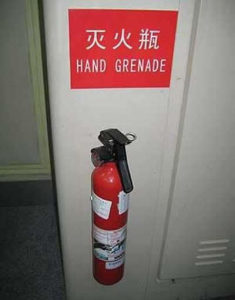
Anyone who has traveled to a foreign country is familiar with the sense of mild amusement that comes from finding public signs horribly mistranslated. Examples of mistranslation mistakes can be found on many websites devoted to such errors, and terms such as Spanglish, Engrish, and Franglish have been coined to describe them. One country, however, has decided to do something about these mistranslated signs by turning to its most widely available resource the public.
Table of Contents
Shenzhen’s Initiative to Fix Mistranslation Mistakes
Shenzhen, a major city in southern China, has launched a campaign asking citizens to report incorrect mistranslated signs on public displays and is offering a reward for doing so. Officials note that Shenzhen is making a drive to become an international city and recognizes the need for accurate English on public signs. Citizens who send in documented photos or reports of incorrect translations will receive certificates, English study books, free English training, or, for the top ten submitters, an invitation to attend a seminar on Shenzhen’s efforts to improve public signage.
How Translation Mistakes Impact Tourism and Business
Other programs in the past have been started to try to correct these mistranslation errors throughout all of China, with varying degrees of success. However, officials in Shenzhen are hoping to clear up their city specifically to support a growing tourist trade of over 7.8 million trips and a permanent foreign population of over 20,000 citizens. The initiative aims to improve communication and prevent misunderstandings caused by poor translations, ensuring a better experience for international visitors.
Why Accurate Public Sign Translation Matters
Ensuring that public signs are translated correctly is essential for international communication. Many funny translation errors may seem harmless, but they can cause confusion for tourists and even create embarrassing or misleading situations. With global tourism and business expansion, accurate translations are crucial to providing a welcoming environment for visitors.
Shenzhen’s initiative is an excellent example of how cities can involve their citizens to improve translation accuracy. By addressing mistranslation examples in public signage, they are setting a precedent for other cities worldwide to follow.
Conclusion
Mistranslated signs can lead to confusion, cultural misunderstandings, and even humorous situations. However, cities like Shenzhen are taking proactive steps to ensure translation accuracy in public spaces. By involving citizens in reporting errors, they are improving communication and making their city more welcoming for international visitors. This initiative highlights the importance of accurate translations, not only for clarity but also for fostering a professional and inclusive environment.
Related:


